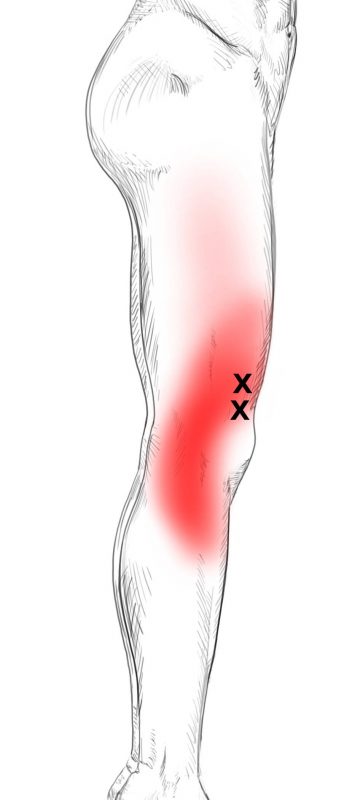Tmj Pain: Ease Neck Tension Today
The Temporomandibular Joint (TMJ) - a complex and often misunderstood component of our facial structure. It’s no secret that TMJ pain can be debilitating, radiating from the jaw and spreading to the neck, shoulders, and even the head. But what if you could find relief from this nagging discomfort? In this article, we’ll delve into the world of TMJ pain, exploring its causes, symptoms, and most importantly, effective strategies for easing neck tension and finding lasting comfort.
Understanding TMJ Pain: A Complex Interplay
The TMJ is a unique joint that connects the mandible (lower jawbone) to the temporal bone of the skull. This joint is responsible for facilitating movements such as chewing, speaking, and yawning. However, when the TMJ becomes inflamed or irritated, it can lead to a range of painful symptoms, including:
- Jaw clicking or popping
- Jaw locking or limited mobility
- Earaches or ringing in the ears
- Headaches or migraines
- Neck and shoulder tension
But what causes this discomfort? The answers lie in a combination of factors, including:
- Teeth grinding and clenching: Also known as bruxism, this habit can put excessive strain on the TMJ, leading to inflammation and pain.
- Poor posture: Forward head posture or rounded shoulders can alter the alignment of the jaw, placing additional stress on the TMJ.
- Stress and anxiety: High levels of stress can lead to increased muscle tension, including the muscles surrounding the TMJ.
- Dental issues: Misaligned teeth, gum disease, or tooth decay can all contribute to TMJ pain.
Breaking the Cycle of Pain: Strategies for Relief
Now that we’ve explored the causes of TMJ pain, it’s time to focus on finding relief. The following strategies can help ease neck tension and alleviate TMJ discomfort:
- Jaw Exercises: Gentle stretching and strengthening exercises can help relax the jaw muscles and improve joint mobility. Try the following:
- Open your mouth as wide as possible, then close it slowly.
- Move your jaw from side to side, then forward and backward.
- Posture Correction: Maintaining good posture can help reduce strain on the TMJ. Make sure to:
- Keep your head in a neutral position, with ears in line with shoulders.
- Roll your shoulders back and down, avoiding a rounded posture.
- Stress Management: Engage in stress-reducing activities, such as:
- Meditation or deep breathing exercises.
- Yoga or tai chi to promote relaxation and flexibility.
- Dental Care: Visit your dentist regularly to address any underlying dental issues. This may include:
- Orthodontic treatment to align teeth.
- Dental restoration to repair damaged teeth.
It's essential to work with a healthcare professional to determine the underlying cause of your TMJ pain. They can help you develop a personalized treatment plan, which may include physical therapy, medication, or dental appliances.
Advanced Techniques for TMJ Relief
In addition to the strategies outlined above, there are several advanced techniques that can provide further relief from TMJ pain:
- Trigger Point Therapy: This involves applying pressure to specific areas of the jaw and neck to release tension and promote relaxation.
- Acupuncture: This ancient practice involves inserting fine needles into specific points to stimulate healing and reduce pain.
- Physical Therapy: A physical therapist can help you develop a customized exercise program to improve jaw mobility and reduce muscle tension.
Step-by-Step Guide to TMJ Relief
- Consult with a healthcare professional to determine the cause of your TMJ pain.
- Develop a personalized treatment plan, which may include exercises, stress management, and dental care.
- Explore advanced techniques, such as trigger point therapy, acupuncture, or physical therapy.
- Practice good posture and engage in stress-reducing activities to promote overall well-being.
The Future of TMJ Treatment: Emerging Trends
As our understanding of the TMJ and its complex interplay with the body evolves, so too do the treatment options available. Some emerging trends in TMJ treatment include:
- Minimally Invasive Procedures: New surgical techniques and instruments are being developed to reduce recovery time and promote more effective healing.
- Stem Cell Therapy: Researchers are exploring the potential of stem cells to repair damaged tissue and promote regeneration in the TMJ.
- Personalized Medicine: Advances in genetic testing and biomarker analysis may soon enable healthcare professionals to tailor treatment plans to an individual’s unique genetic profile.
What are the most common symptoms of TMJ pain?
+Common symptoms of TMJ pain include jaw clicking or popping, jaw locking or limited mobility, earaches or ringing in the ears, headaches or migraines, and neck and shoulder tension.
Can TMJ pain be treated without surgery?
+Yes, many cases of TMJ pain can be treated without surgery. Non-surgical options include jaw exercises, posture correction, stress management, and dental care.
How can I prevent TMJ pain from recurring?
+In conclusion, TMJ pain is a complex and multifaceted issue that requires a comprehensive approach to treatment. By understanding the causes of TMJ pain, exploring effective strategies for relief, and staying up-to-date on emerging trends in treatment, you can take the first steps towards easing neck tension and finding lasting comfort. Remember, a healthy TMJ is just the beginning - with the right approach, you can unlock a lifetime of wellness and vitality.

